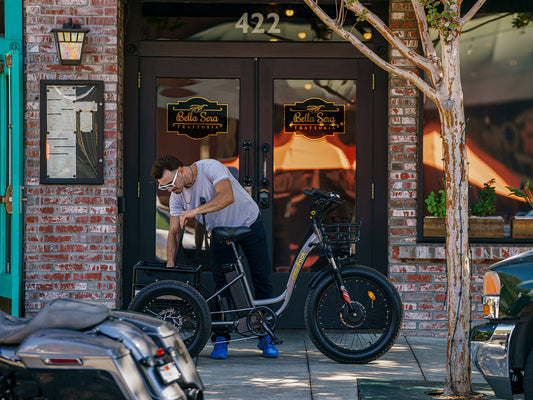As dawn breaks and the city begins to stir, you mount your trusty electric bike, ready for the daily commute. You maneuver deftly through the bustling streets, feeling like the protagonist of a two-wheeled urban adventure. But then it happens - a fellow commuter zips past you, leaving you in their electric dust. It's at this moment you start to question, “What exactly influences the speed of my eBike?”
From the traffic-laden streets to the serene cycling paths, many factors contribute to the speed at which you traverse your daily journey. Is it the technical specifications of your eBike, or the ever-fluctuating environmental conditions? Or, could it be the nuanced ways you, as the rider, interact with these elements?
Let’s unravel this mystery and delve into the intricate factors that impact the average commuter eBike speed. So, strap on your helmet and join us as we pedal our way to the heart of this electrifying question.
10 Factors That Influence Average Commuter Ebike Speed
The speed of an eBike is not a single-factor equation but a complex combination of many variables.
Here’s a detailed outlook of 10 factors that influence your electric bike’s speed:
#1 Motor Power
The heart of an eBike, the motor power, plays a vital role in determining speed. The higher the wattage, the power more the motor can provide for acceleration and hill climbing.
For example, if you're trying to climb a steep hill or carry a heavy load (like groceries or additional equipment), a motor with more power will help maintain a higher speed. However, electric bike power is legally limited to 750 or 1000W in most states.
#2 Bike Design and Weight
A bike's design, specifically its aerodynamics, can impact its speed. For instance, if your bike has a sleek, streamlined design, it will have less air resistance, allowing you to reach higher speeds more efficiently. Conversely, a bulkier, less aerodynamic design might slow you down due to greater wind resistance.
#3 Battery Voltage
Speed and battery have always been interconnected. Since the battery powers the motor, a stronger battery with higher voltage can maintain higher speeds for longer periods. However, when your battery charge is low, the motor might not deliver peak power, and your eBike's speed could decrease.
#4 Type of Terrain
Different terrains can dramatically impact your eBike's speed. If you’re biking on a smooth, flat road, you can maintain higher speeds with less effort. However, if you’re moving through rough, off-road trails or steep uphill paths, your speed will likely decrease due to more resistance offered by the trail.
#5 Tires
Tires designed for different uses can affect speed. For example, if you're using thick, knobby tires meant for off-road biking on city streets, their increased rolling resistance may slow you down.
Whereas, slick, thin tires designed for smooth surfaces will provide less resistance, enabling higher speeds on paved roads.
#6 Weather Conditions
In strong headwinds, your eBike will need to work harder to maintain speed, potentially slowing you down. Conversely, tthe ailwinds can help boost your speed.
Electric bikes are safe in the rain. However, rain also affects speed by reducing traction, making it more challenging to maintain control and speed. Also, in cold temperatures, battery performance can decrease, which could affect the motor's power output and subsequently, the eBike's speed.
#7 Gearing System
The gears help adapt the bike's speed to the terrain. For example, when climbing a steep hill, shifting to a lower gear allows for easier pedaling at a slower speed. Conversely, on flat terrains, shifting to a higher gear can help you achieve and maintain higher speeds.
#8 Type of Motor Arrangemen
Electric bikes usually have two types of arrangement; a hub motor or a mid-drive motor. Both systems influence the commuter’s ebike speed.
A hub motor is known for allowing high top speeds, which is advantageous when commuting on flat roads. In contrast, a mid-drive motor, while generally not allowing as high top speeds, provides better torque and more efficient power distribution, making it more suitable for hill climbing or off-road conditions.
#9 Legal Restrictions
Electric bikes have the potential to match your pedaling speed, but adherence to certain restrictions is essential. Local regulations play a critical role in imposing specific speed limits on eBikes. For instance, the ebike speed limits in the US are between 20 to 28 mph. If you surpass that, you’ll be legally charged and fined.
#10 Personal Cycling Power
Your own physical input significantly impacts your eBike's speed. For instance, if you're pedaling hard and using the motor minimally, you'll likely go faster than if you rely solely on the motor. However, your speed may decrease as you tire out, even if the motor is assisting.
Final Thoughts
In the world of commuter eBikes, speed is a thrilling quest. From motor power to terrain, various factors shape your ride. While local regulations set boundaries, the true joy lies in finding the perfect balance. So, embrace the journey, push your limits, and let the winds of adventure carry you forward.




